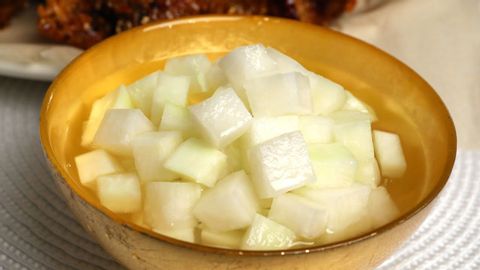雞毛(醃蘿蔔:치킨무)。 (Chicken-mu (Pickled radish: 치킨무))
 沒有此條件下的單字
沒有此條件下的單字US /ˈɡɔrdʒəs/
・
UK /'ɡɔ:dʒəs/
- adj.華麗的 ; 豪華的 ; 絢爛的;宜人的;令人愉快的;壯麗的;宏偉的
US /ˈtɛkstʃɚ/
・
UK /ˈtekstʃə(r)/
- n. (c./u.)(文藝作品等的)組織;結構;紋理:質感:質地
- v.t.使...具有粗糙或浮凸的紋理
US /ˈrɛsəˌpi/
・
UK /'resəpɪ/
- n. (c.)公司;商業機構
- adj.穩定;穩固;公司
- v.t.穩定,鞏固

